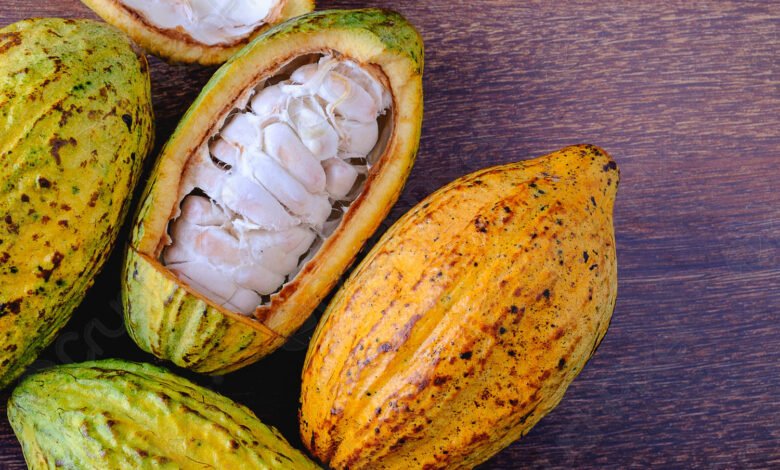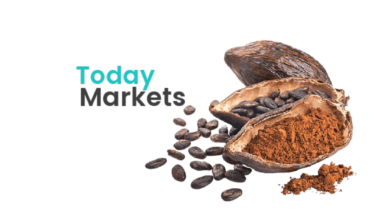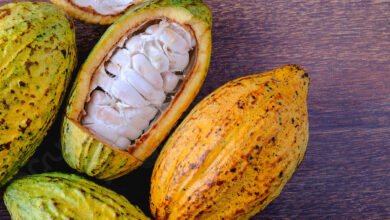Cocoa Prices Fall Back After This Week’s Rally

March ICE NY cocoa (CCH25) on Friday closed down -222 (-2.14%), and March ICE London cocoa #7 (CAH25) closed down -156 (-1.91%).
Cocoa prices Friday fell back after the rally seen earlier this week. Coffee prices rallied earlier this week due to West African cocoa crop concerns. Cocoa farmers in the Ivory Coast and Ghana, the world’s two biggest cocoa-producing countries, said spotty rainfall over the past two weeks has been insufficient for tree regeneration and flowering.
Concern about slowing Ivory Coast cocoa exports is a supportive factor for cocoa prices. While government data Monday showed Ivory Coast farmers shipped 1.32 MMT of cocoa to ports so far this marketing year to February 9, up more than +21% from last year, the pace has narrowed from the 35% rise seen in December.
Cocoa prices have been under pressure over the past week and posted 2-month lows last Friday on signs of slowing cocoa demand. Chocolate maker Hershey said last Thursday that high cocoa prices are forcing it to reformulate recipes by replacing cocoa with other ingredients. Last Tuesday, chocolate maker Mondelez International pointed to a potential slowdown in chocolate demand when CFO Zarmella said, “We are seeing signs, particularly in parts of the world like North America, where cocoa consumption is coming down.”
High cocoa prices reduced cocoa demand in Q4 as seen in the quarterly grinding reports. On January 9, the European Cocoa Association reported that Q4 European cocoa grindings fell -5.3% y/y to 331,853 MT, the lowest in more than 4 years. Also, the Cocoa Association of Asia reported that Q4 Asian cocoa grindings fell -0.5% y/y to 210,111 MT, also the lowest in 4 years. In addition, the National Confectioners Association reported that Q4 North American cocoa bean grindings fell -1.2% y/y to 102,761 MT.
Tight global cocoa inventories are bullish for prices. ICE-monitored cocoa inventories held in US ports have been trending lower for the past 1-1/2 years and, on January 24, fell to a 21-year low of 1,263,493 bags.
West African cocoa crop production concerns are bullish for prices. Forecaster Maxar Technologies said this year’s seasonal Harmattan winds are the driest in six years, worsening crop conditions. Some Ivory Coast and Ghana cocoa farmers have reported that cocoa trees are beginning to suffer the effects of the seasonal dry and dusty Harmattan winds, with leaves turning yellow and the cherelles (cocoa pods) withering.
On the negative side, the Ivory Coast regulator Le Conseil Cafe-Cacao on October 18 raised its Ivory Coast 2024/25 cocoa production estimate to a range of 2.1-2.2 MMT from a June forecast of 2.0 MMT.
Cocoa found support after Ghana’s Cocoa Board (Cocobod) on August 20 cut its 2024/25 Ghana cocoa production estimate to 650,000 MT from a June forecast of 700,000 MT. Due to bad weather and crop disease, Ghana’s 2023/24 coca harvest sank to a 23-year low of 425,000 MT. Ghana is the world’s second-biggest cocoa producer.
In a bullish factor, the International Cocoa Association (ICCO) on November 22 raised its 2023/24 global cocoa deficit estimate to -478,000 MT from May’s -462,000 MT, the largest deficit in over 60 years. ICCO also cut its 2023/24 cocoa production estimate to 4.380 MMT from May’s 4.461 MMT, down -13.1% y/y. ICCO projected a 2023/24 global cocoa stocks/grindings ratio of 27.0%, a 46-year low.




